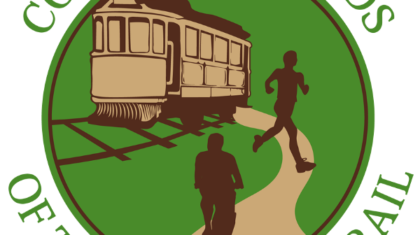
What makes a community a great place? The ingredients of placemaking include branding, signage, and environmental graphics that complement and reinforce the efforts of planners, engineers, and landscape architects to create great streets, trails, neighborhoods, and districts.
The city of Travelers Rest, South Carolina, population 4,600, is an example of small town placemaking done well. Additionally, it is an example of how a small town can craft an identity as a “trail town” with careful planning and incremental implementation.



An Emerging Trail Town
Several miles north of Alta’s Greenville office, “TR,” as the city of Travelers Rest is affectionately known, is connected to downtown Greenville by the Swamp Rabbit Trail, a successful rails-to-trails project that has inspired a handful of similar projects across the region. The city and its partners have taken full advantage of economic potential of the Swamp Rabbit Trail, with dozens of new retailers, restaurants, a brewery, and future trailside residential projects that cater to the trail’s half-million annual users. TR has cultivated strong trail connections between the Swamp Rabbit Trail and city neighborhoods, parks, schools, and its downtown. The city has also located pedestrian-scale kiosks on the trail to orient visitors and point out key community businesses, attractions, and online information sources. Local groups sponsor trail-related events, such as trail rides and “Art on the Trail.” The Travelers Rest section of the Swamp Rabbit Trail also serves as a venue for a half-marathon and an annual 5K race that effectively doubles the city’s population for an evening every May. The city has also worked with the county recreation district and volunteers to create the Upstate’s first flow park for mountain bike skills at Gateway Park, which is directly connected to the Swamp Rabbit Trail.


The Role of Community Branding and Wayfinding

As part of its placemaking efforts, TR has implemented a community brand identity that combines a clever type treatment and a tagline that evoke the periodic table of elements and Travelers Rest’s emerging identity as an outdoors lifestyle hub for Upstate South Carolina. This brand identity has been implemented in a variety of ways in the built environment, from community gateways and banners to vehicular wayfinding signage that directs motorists downtown and to trailheads for the Swamp Rabbit Trail. The wayfinding system is designed to convert motorists to pedestrians (who can then spend money downtown), with clearly marked parking signage and pedestrian-scale elements that tie seamlessly into the city’s new downtown streetscape.
Next Steps
Travelers Rest is working with Alta’s Greenville office to achieve Silver Bicycle Friendly Community status and implement the city’s Alta-developed bicycle and pedestrian master plan. City leaders are also working with Alta to explore a corridor plan to expand downtown’s pedestrian- and bike-friendly environment. The city is also exploring a public art master plan to grow and manage its public art resources. In the longer term, regional stakeholders are exploring ways to connect Travelers Rest to nearby state parks up to the North Carolina state line.
Lessons for Other Communities
Travelers Rest, South Carolina shows how small communities with limited resources can still make a big impression on residents and visitors when it comes to placemaking and identity. The city is also an example of leveraging the economic potential of trails and greenways, and ensuring that these connections tie together recreational, educational, residential, and commercial assets to make a more sustainable community. Lastly, Travelers Rest shows how a community (in a very conservative part of our country) can embrace an identity as a trail town where walking and biking are economic generators as well as normal, safe, everyday activities.


